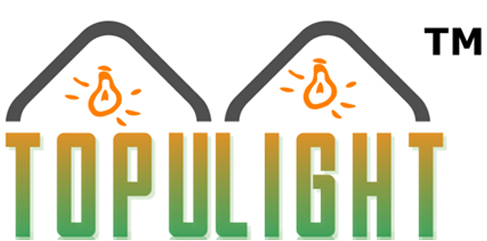Contents
Illicit drugs used recreationally often include cocaine and marijuana, among many more. All types of drugs are and can be used recreationally, but this use – alcohol addiction treatment center even when legal – can pose serious risks. Healthcare providers have historically been less familiar with PEDs abuse than with other illegal substance abuse.
What causes drugs to be addictive?
Most drugs affect the brain's reward circuit by flooding it with the chemical messenger dopamine. Surges of dopamine in the reward circuit cause the reinforcement of pleasurable but unhealthy activities, leading people to repeat the behavior again and again.
The meaning of drugs and decriminalization and the appropriate limits on the scope of the criminal law are discussed. The article addresses whether people should have a moral and political right to use drugs recreationally, and if so, under what conditions the state should have the power to deny or to curtail that right. Finally, the article explores the costs and benefits of criminalization and decriminalization to public safety, public health, and public welfare generally, and to the effective, honest, and orderly administration of law enforcement and criminal justice. Forensic scientists have utilized RS very efficiently to analyze these recreational drugs as well as their analogs.
Recreational Drug
Second, having a sense of control over a risky situation reduces fear. People drinking alcoholic beverages believe that they have reasonably good control of the quantity they intend to consume. Control of the dose of alcohol is indeed easier than with many natural or illicit substances where the active ingredients are not commercially standardized. Furthermore, alcohol is often consumed in a beverage that dilutes the alcohol to a known degree. A worshipper smokes marijuana for meditation at the Pashupatinath Hindu temple complex in Kathmandu, Nepal . The author’s studies of relative toxicity suggest that although this custom is probably more dangerous than ingesting marijuana, it is far less likely than drinking alcohol to cause a sudden lethal reaction.

He is concerned that the use of recreational drugs by athletes has grown since he has been away from football. If you are a parent and your teen is using drugs for fun, do not dismiss it as “normal” or “okay.” Be sure to talk to your teen about the dangers of substance use, and do not be afraid to intervene or ask for help. What seems like fun or innocent drug use has the potential to spiral into a more concerning issue, especially for youth. Introducing drugs at an early age can lead to longer-term effects on a person’s mental health and well-being.
Performance Enhancing Drugs[edit | edit source]
Psychosis was one of the pre-defined clinical features collected in the minimum data set. Psychosis was defined as any episode of delusions, transient or persistent, accompanied by confusion, hallucinations and lack of insight, based on the assessment of the treating clinician as documented in the patient’s notes. So despite the fact that about 75 percent of all adults in the United States enjoy an occasional drink, it must be remembered that alcohol is quite toxic. Indeed, if alcohol were a newly formulated beverage, its high toxicity and addiction potential would surely prevent it from being marketed as a food or drug.
Which organ does a drug reach first?
After a drug is swallowed, it is absorbed by the digestive system and enters the hepatic portal system. It is carried through the portal vein into the liver before it reaches the rest of the body.
This has been continued as the Euro-DEN Plus network following completion of the initial project, with the aim of increasing the number of centres and coverage across Europe. They often have pharmacological effects and are used as medications, as recreational drugs, or in entheogenic rituals. Utilization of recreational drugs or alcohol generally makes symptoms worse. Use of alcohol, recreational drugs, excessive caffeine, and certain medications also can be harmful. Caffeine, alcohol, tobacco and other recreational drugs are known triggers of premature ventricular contractions.
Society and culture
Subcultures have emerged among users of recreational drugs, as well as alternative lifestyles and social movements among those who abstain from them, such as teetotalism and “straight edge”. Patients may not report all drugs ingested, and may not know the actual psychoactive ingredient in the substance taken. However, this reflects the actual clinical situation in most settings treating acute poisoning, as well as current best practice in toxicology, in which patients are managed based on their clinical presentation. The frequency of psychosis in acute recreational drug toxicity varies considerably between drugs, but is a major problem in amphetamine poisoning. In rapidly changing drug markets and patterns of use, the Euro-DEN sentinel network contributes to measuring the scale of drug-related harms in Europe beyond other more established indicators.

The exact mechanisms of alcohol-induced immunosuppression have yet to be defined. However, a number of studies have shown that EtOH can directly inhibit DC fate and function. Drinking alcohol creates intoxication, relaxation and lowered inhibitions.
Cannabis is the most commonly used illegal drug, but some people advocate its use in pain relief. Likewise, amphetamines have been used as decongestants and in treating ADHD, but its criminalization led to the development of designer drugs such as ecstasy. Heroin and cocaine are considered as harder drugs that carry many more risks to users and society.
07.2.1.3 Ethanol and drugs of abuse
Despite the health risks and social costs, consciousness-altering chemicals have been used for centuries in almost all cultures. So it would be unrealistic to expect that all types of recreational drug use will suddenly cease. Self-management of these substances is extremely difficult, yet modern Western societies have not, in general, developed positive, socially sanctioned rituals as a means of regulating the use of some of the less hazardous recreational drugs. The science of toxicology may provide one step in that direction, by helping to teach members of our society what a lot of tribal people already know.
- Cocaine is the substance that induces the highest rate of repetitive consumption as a result of mood change.
- Alcohol, for example, can be recreationally enjoyed with special dinners, or it could be consumed sparingly for enjoyment.
- The diagnosis of psychosis was made by the treating ED clinician, and not necessarily by a psychiatrist.
- In the 1960s, the counterculture movement introduced the use of psychoactive drugs, including cannabis.
- Such dietary substances are available for purchase over the counter and online by persons of any age without prescription.
Besides an extensive description of the chemistry of the cannabinoids, this chapter also introduces the lesser-known terpenoids, flavonoids, and other constituents of the Cannabis plant. Comprehensive information on a variety of subjects is presented, including chromatographic analytical methods, pharmacokinetics, and structure-activity can alcoholics drink in moderation relationships. The known biological effects of Cannabis constituents are discussed in relationship to the development of modern cannabinoid-based medications. Finally, some practical aspects of working with Cannabis are discussed. Based on the number of publications, it is one of the best-studied plants in the world.
The regulatory bodies for sports have reported rates ranging from 5% to 31% for the use of performance-enhancing substances among athletes. Athletes can have serious injuries and morbidities, leading to poor health with the use of such substances. Health-care professionals need to be careful while prescribing medicines lamictal and alcohol to sportspersons. The diagnosis of psychosis was made by the treating ED clinician, and not necessarily by a psychiatrist. Consequently, there is a potential for misdiagnosis; although this represents routine clinical practice and assessment/management of patients in European EDs with acute recreational drug toxicity.
Absorption via this route is rapid and it is predominately eliminated via the kidneys. Users can risk suffering clinical effects that may range from anxiety and agitation to psychosis and seizures. Additionally, excessive water consumption and inappropriate secretion of antidiuretic hormone can lead to hyponatremia and cerebral edema. Chronic users also risk the loss of neuronal serotonin reuptake transporters. Treatment typically consists of supportive care that includes controlling agitation, prompt treatment of hypertension and serotonin syndrome, and aggressive responses to hyperthermia.
What are the 6 types of drug abuse?
There are a wide variety of addictive substances that exist, but the most common types are classified under 6 main categories: alcohol, Benzodiazepines, illicit drugs, Opiates, Sleeping Pills, and Stimulants.
Steroids Man-made substances used to treat conditions caused by low levels of steroid hormones in the body and misused to enhance athletic and sexual performance and physical appearance. For more information, see the Steroids and Other Appearance and Performance Enhancing Drugs Research Report. SalviaA dissociative drug that is an herb in the mint family native to southern Mexico. Dissociative drugs are hallucinogens that cause the user to feel detached from reality. For more information, see the Hallucinogens and Dissociative Drugs Research Report. Rohypnol® (Flunitrazepam/Roofies)A benzodiazepine chemically similar to prescription sedatives such as Valium® and Xanax® that may be misused for its psychotropic effects.
For more information, see the Misuse of Prescription Drugs Research Report. And that has encouraged the Caracole prevention staff, because people who smoke, and especially recreational drug users, don’t commonly go to safe syringes sites, which offer other safer-use items, Bachmeyer said. Tom Scott, executive director of the Massachusetts Association of School Superintendents, said his members are skeptical about allowing medical cannabis in schools given pot’s history as a recreational drug. Hallucinogen-induced psychosis occurs when psychosis persists despite no longer being intoxicated with the drug. It is estimated that 26% of people with hallucinogen-induced psychosis will transition to a diagnosis of schizophrenia. This percentage is less than the psychosis transition rate for cannabis (34%) but higher than that of amphetamines (22%).
Rohypnol has been used to commit sexual assaults because of its strong sedation effects. In these cases, offenders may dissolve the drug in a person’s drink without their knowledge. Methamphetamine (Crystal/Meth)An extremely addictive stimulant amphetamine drug. HeroinAn opioid drug made from morphine, a natural substance extracted from the seed pod of various opium poppy plants. Gamma-hydroxybutyrate Gamma-hydroxybutyrate is a depressant approved for use in the treatment of narcolepsy, a disorder that causes daytime “sleep attacks”.
Both plasmacytoid DCs and myeloid DCs are present in the spleen and may have varying responses to opioids. Thus, studies using various opioid receptor agonists have yielded conflicting results. Nonetheless, exogenous administration of opioids for medical or recreational purposes can lead to aberrant DC-mediated immune responses. In addition to opioid receptors, DCs also express the cannabinoid receptors CB1 and CB2. Fortunately, the chemistry of Cannabis has been studied in much detail. In particular the psychoactive cannabinoid tetrahydrocannabinol has received great scientific attention, and much is known about its biological effects and mechanisms of action.
